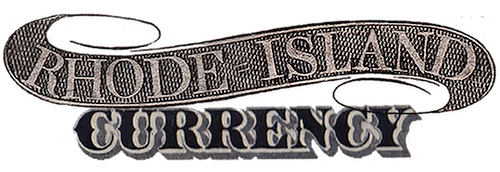Smithfield Exchange Bank, Greenville
The Smithfield Exchange Bank was incorporated in June of 1822 and occupied a newly-constructed wing of the Greenville Tavern (also known as the Waterman Tavern), on Putnam Pike in Greenville, a village in the town of Smithfield, Rhode Island. The original building had been constructed in 1773 by a grandson of Roger Williams.
Daniel Winsor served as first president of this country bank and Nicholas S. Winsor was its first cashier. (Members of the Winsor clan would occupy important positions at the bank throughout its existence.) Its original directors were Daniel Winsor, Nathan B. Sprague, Stephen Steere, Elisha Smith, Thomas Mowry, Charles C. Mowry, Reuben Mowry, Nathaniel Mowry, Silas Smith, Elisha Steere, Asa Winsor, Joseph Mathewson, Richard Smith.
It was begun with a capital of $40,000, which was reduced to $30,000 in 1845. By 1862, its capital had been raised to $100,000. During its time as a state bank, the Smithfield Exchange issued notes ranging from $1 to $100, including a $3 bill and a series in denominations of $1.25, $1.50 and $1.75. None of these decimaled banknotes survive to this day, though at least one contemporary counterfeit does exist.
In 1856, a new brick building was built to house the bank adjacent to the old tavern.
In 1865, Smithfield Exchange joined the national banking system and became the National Exchange Bank of Greenville (charter #1498) with a capital of $150,000. During its time as a national bank, this institution issued $1,244,330 in banknotes, $37,500 of which was left unredeemed in 1928 according to the National Bank Note Census. It circulated bills in denominations ranging from $1 to $100. 16 of these banknotes have survived and are known to be in collectors’ hands today.
On March 13, 1872, the bank created the Smithfield Savings Bank with Its officers being as follows: President, Benjamin R. Vaughn; Vice-President, George M. Appleby; Treasurer, William Winsor; Secretary, Oscar A. Tobey; Directors, Pardon Angell, E. W. Brown, William Winsor, G. W. Hubbard, John S. Sprague, George M. Appleby, and Andrew B. Whipple. The savings bank had deposits of $270,250 by 1876.
National Exchange was liquidated on July 20, 1928 when its capital at the time was noted as $150,000. It subsequently became the Greenville Trust Company.
In 1954, Greenville Trust was acquired by Citizens Savings Bank of Providence (formerly the High Street Bank).
While parts of the original tavern were torn down in 1936, recently there has been a renewed effort on the part of the Smithfield Preservation Society to preserve the building. In 2014, the Society undertook work to preserve the second floor Directors Room and the Bank Room, which retains its original 3-foot square vault.
For additional information, see:
• History of the bank at the Smithfield Preservation Society
• 2014 Valley Breeze article on the tavern and bank’s restoration
• Vintage interior photos of the bank
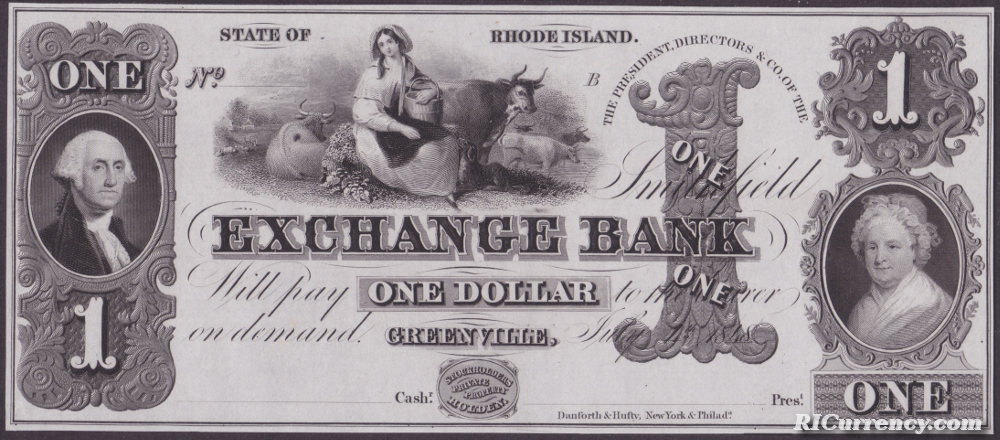
July 4, 1848 Proof. Durand 467, Haxby RI-465 G50P pp B, Bowers W-RI-430-001-G010
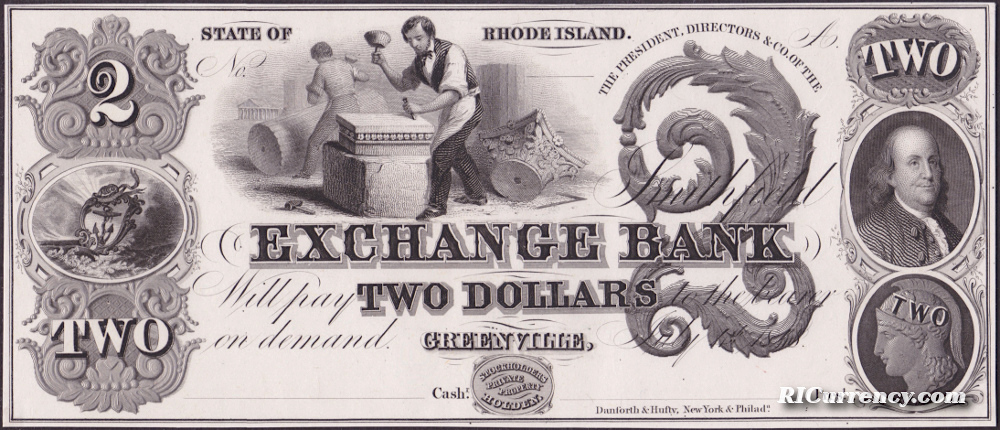
July 4, 1848 Proof. Durand 473. Haxby RI-125 UNL2aP (G52?) ppA
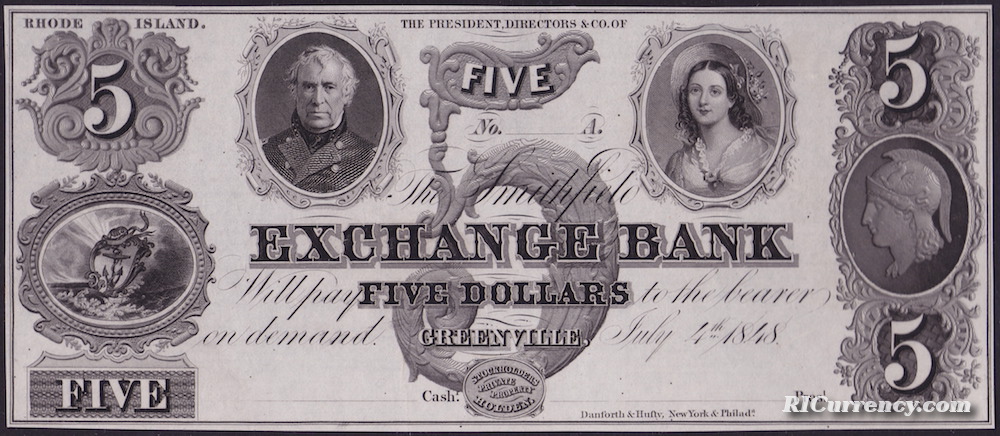
July 4, 1848. Durand UNL, Haxby RI-465 G54, Bowers W–RI-430-005-G030


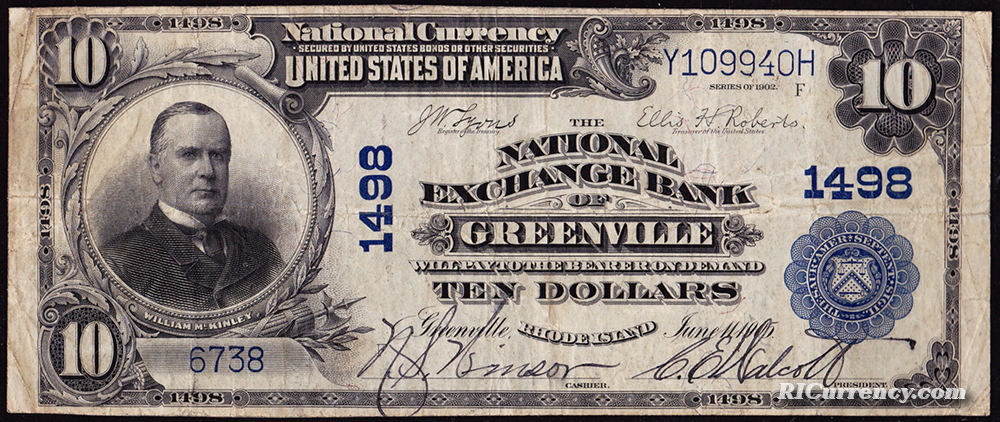

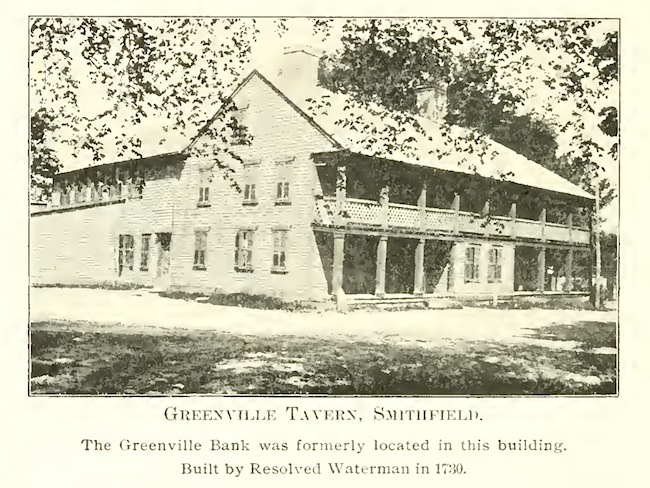
A vintage photo of the first home of the Smithfield Exchange Bank in the Greenville Tavern.
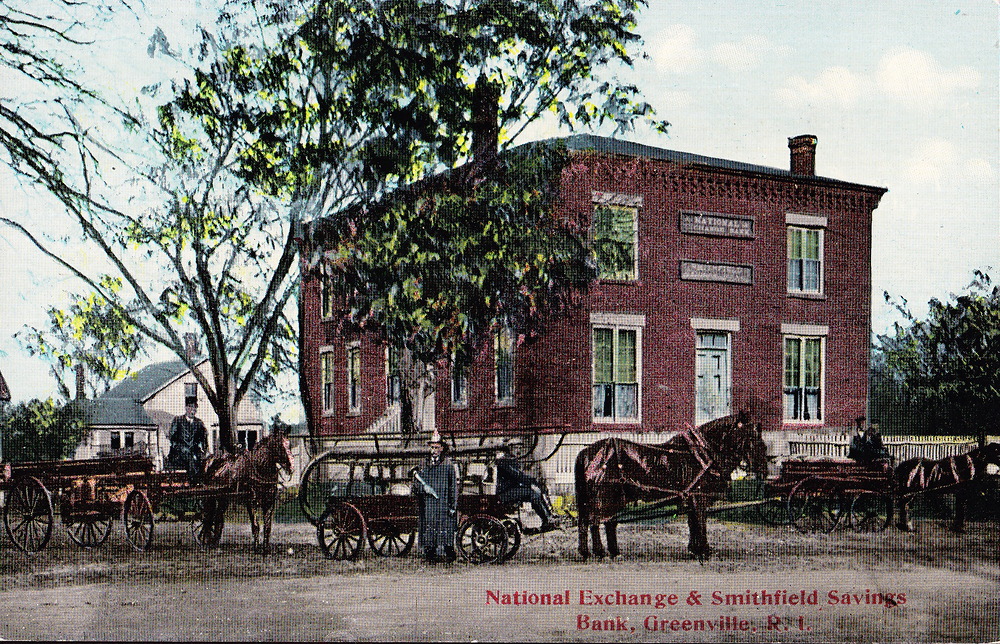
A 19th century postcard of the National Exchange Bank (formerly the Smithfield Exchange Bank). This structure was built next door to the Greenville Tavern.
The Greenville Fire Department, with their hand pump engine known as “The Water Witch,” stands in the foreground.
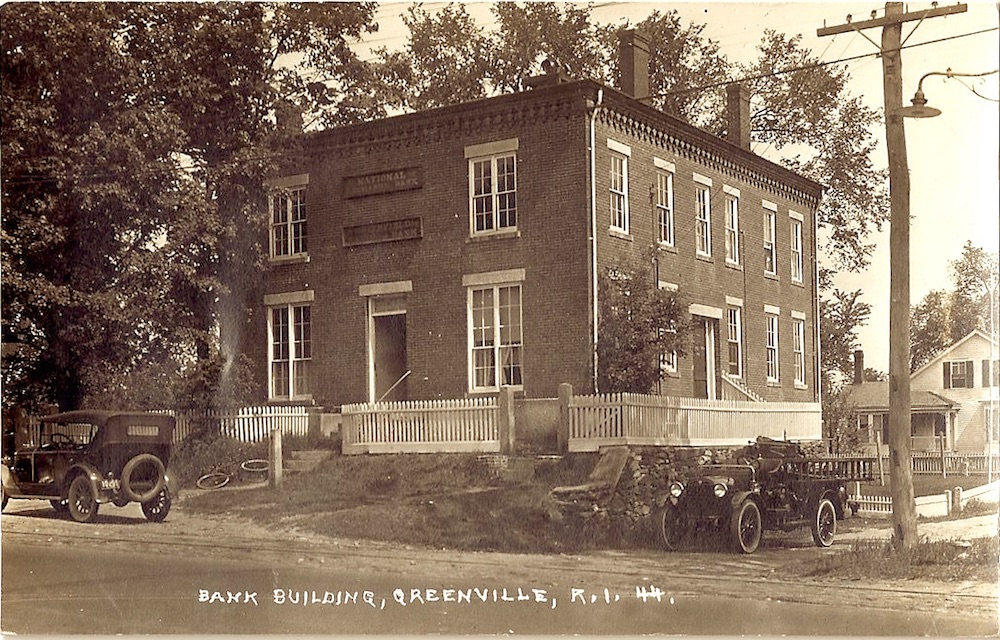
A postcard from the early 20th century showing the bank.
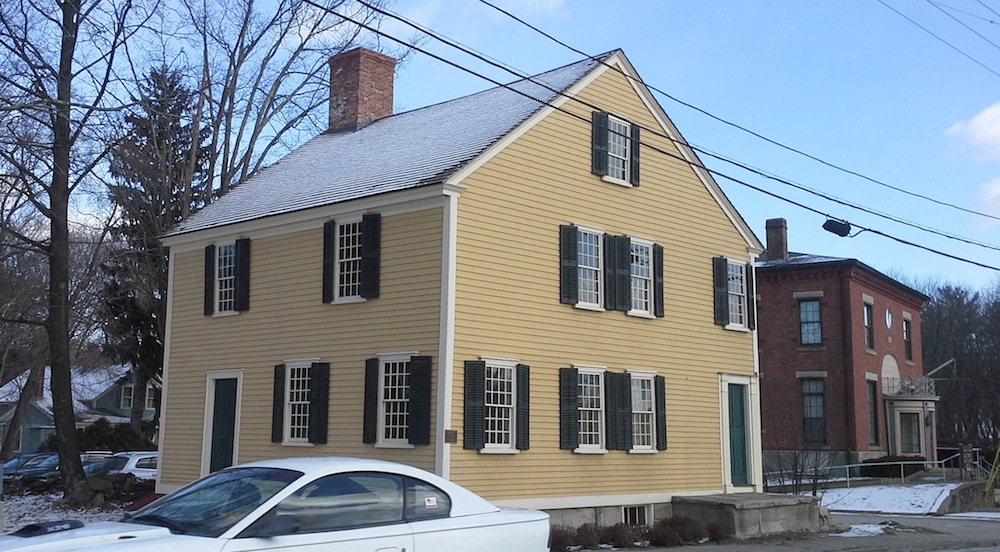
A 2013 photo showing the old Greenville Tavern building with the National Exchange building behind it on Putnam Pike in Greenville.
Both structures have been altered since their bankings days.
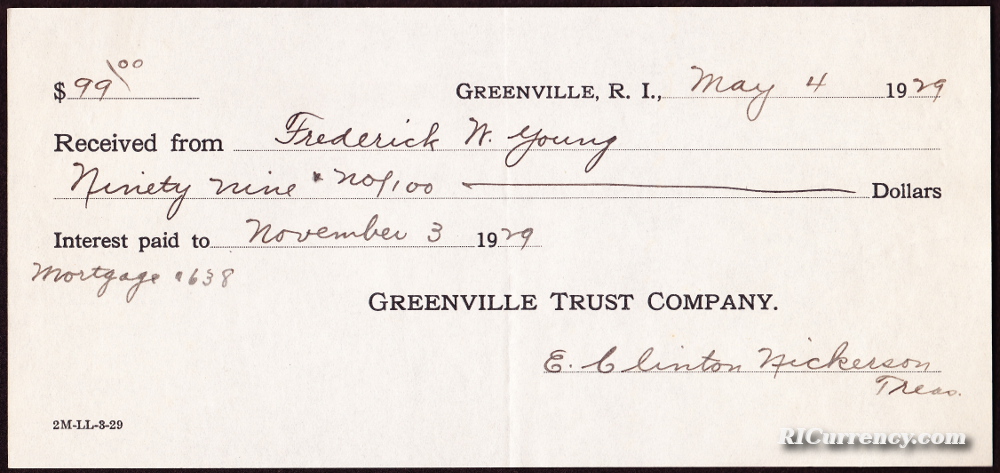
A Greenville Trust Company document.
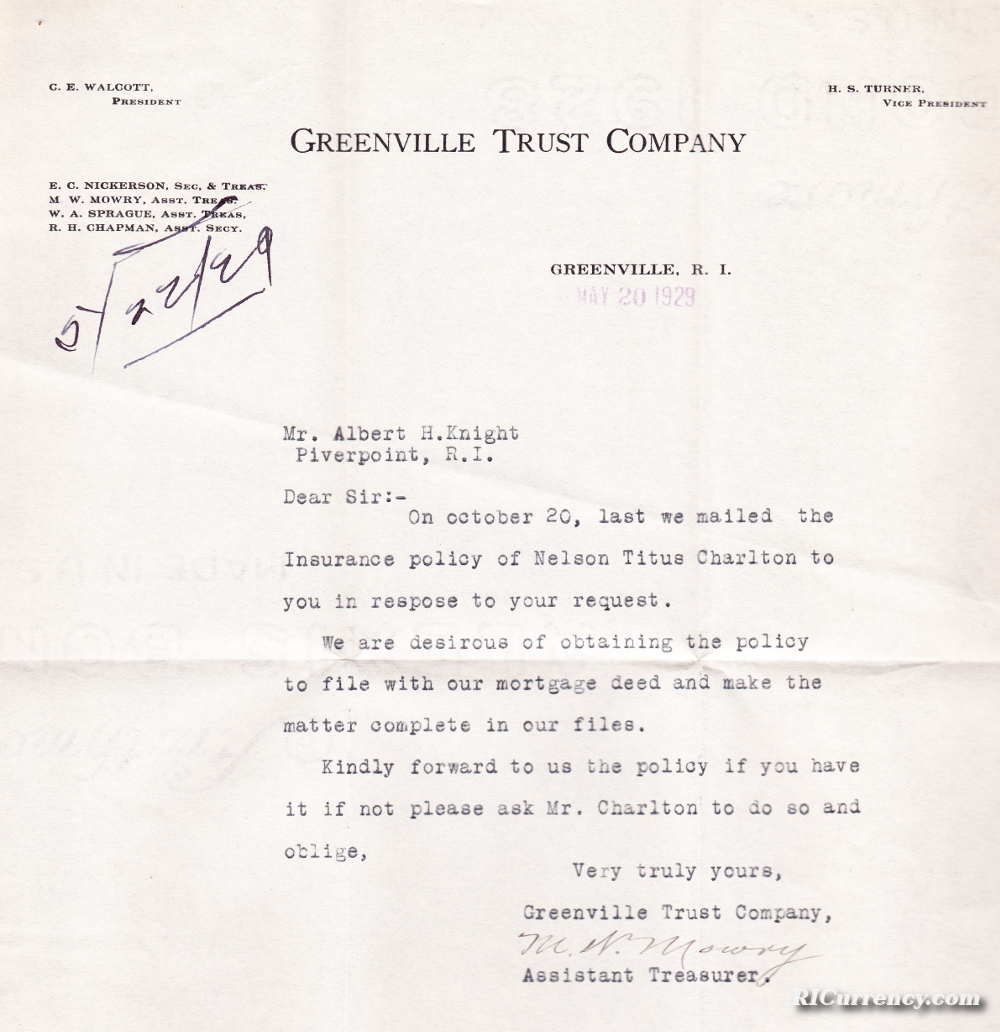
A letter from the bank, 1929.
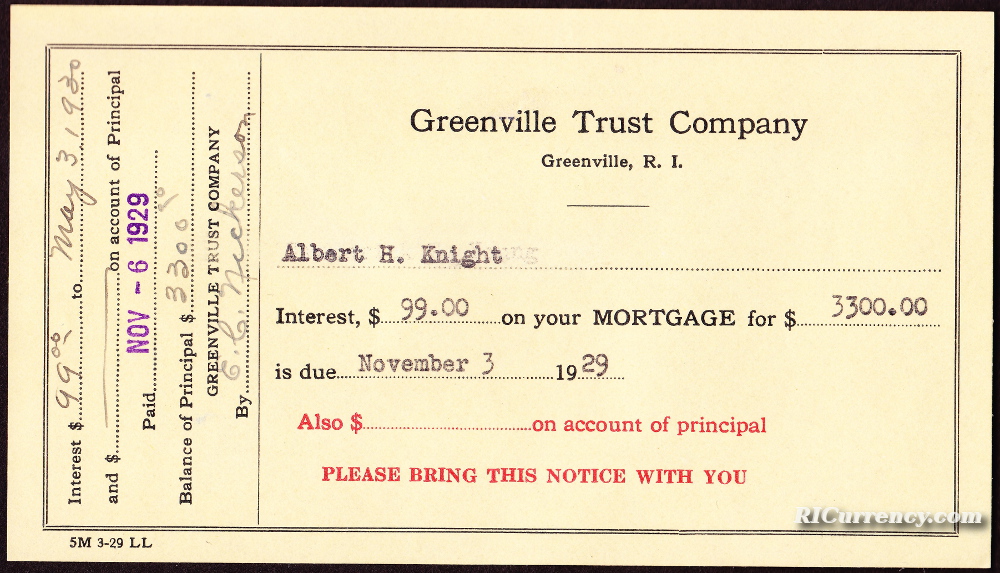
A mortgage notice from November 3, 1929.
